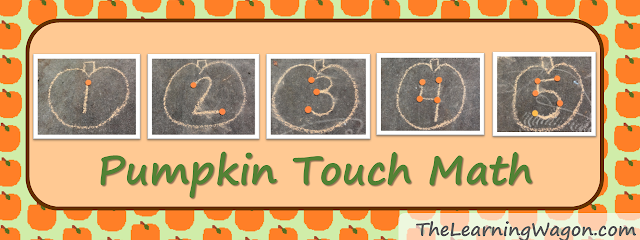Have you heard of Touch Math® ? On their
website, Touch Math is described as , “is a multisensory program that uses
its signature TouchPoints to
engage students of all abilities and learning styles.” It’s used to teach a
variety of math concepts from basic concepts like number
recognition and counting to more
difficult concepts like multiplication and fractions.
I’ve personally used Touch Math in my
kindergarten classroom as well as with
special education students I worked with. Now, I
am using it to teach Caleb number concepts at this time.
Here are a few ways we are
practicing learning numbers.
First, I taught Caleb to rote count
1 – 10 orally with many opportunities to practice while cleaning up, in the
car, singing, and more. Now that he can
count to 10 without mistakes (most of the time), I am introducing a few numbers
at a time.
Right now we are working on 0, 1,
2, and 3. Once these are mastered, I will introduce one more number at a time.
The Touch Math program is created for children pre-school age (3 – 5)
and older into the upper grades. Since my son is 2, I have tried to present the
Touch Math concept to him in a larger-than-life way that also ties in to what
we have been studying.
I write the numbers on paper or
outside with sidewalk chalk very large. Then, we use the selected material for
the day to practice counting and building number concepts.
Here are a few examples...
* Both of these examples show our experiences outside with sidewalk chalk. I draw each number on the ground about 18 inches. As I draw the numbers, we name them, clap them, stomp them, and then we place the object of study onto the appropriate TouchPoint.
In the first picture, we used leaves.
This time, we used orange foam circles.
I also have an art book with one number written on each page that is equal to the size of the page. We practice these numbers just as we do the ones outside, we point to and name the number, trace our finger on the number, clap it, stomp it, and place objects that match our them on these numbers. We've used popcorn, pumpkin seeds, rocks, pinecones, and more! The ideas are endless. This activity is good because it is repetitious, but using different objects each time makes it interesting every time we do it! The most important thing to remember for all children, especially toddlers, is to keep it fun and go at their pace. They will learn it when they are ready and interested.
I encourage you to check out the Touch Math® website. They have a great deal of information, free trainings, free downloads, and a great curriculum! I plan on starting Caleb with the more structured curriculum next year.
Blessings to ya!












































